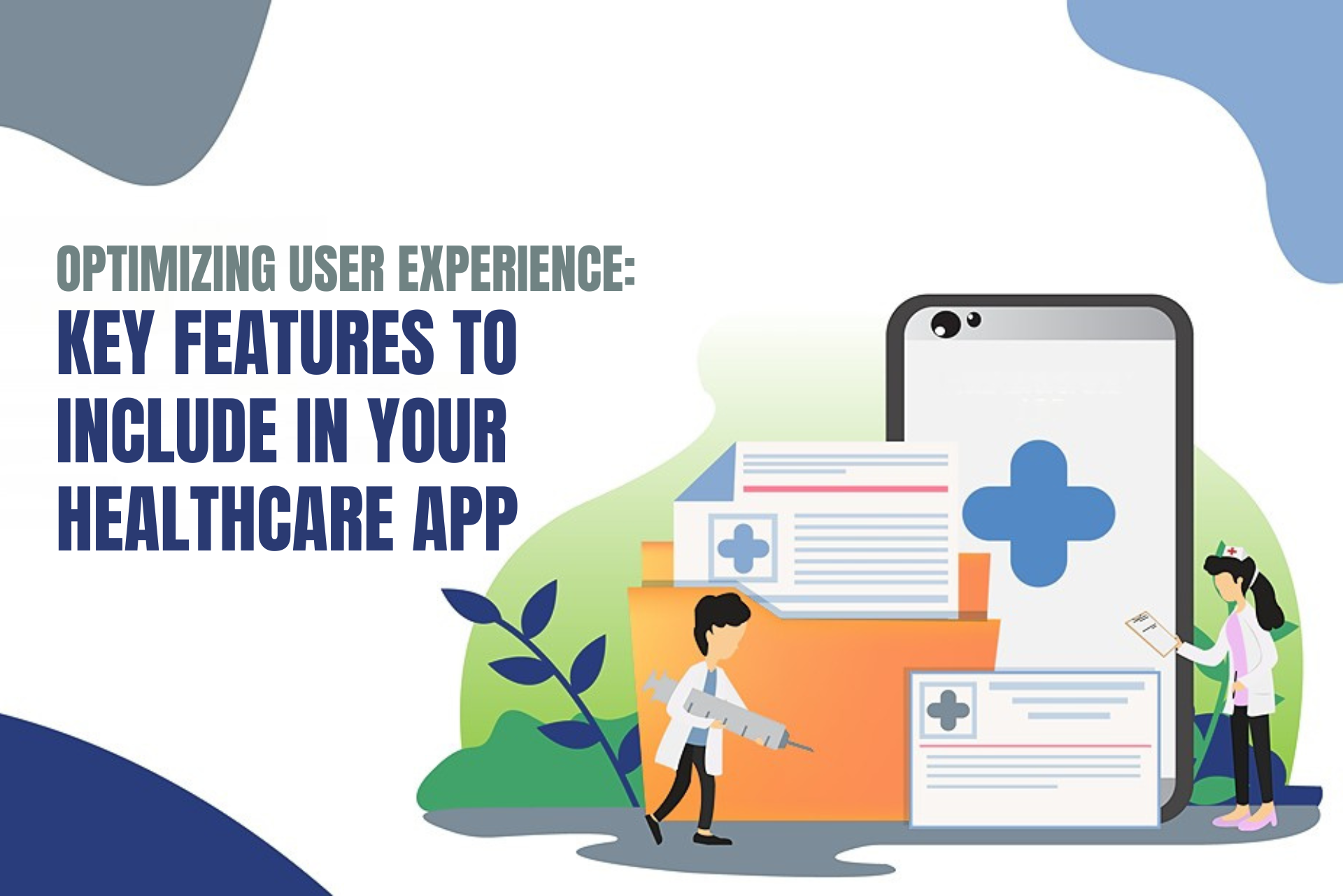Optimizing User Experience: Key Features to Include in Your Healthcare App
In today’s digital age, where convenience is paramount, healthcare apps have become indispensable tools for both medical professionals and patients. The global market for digital health was worth more than $330 billion in 2022. According to recent estimates, this amount is expected to top $650 billion by 2025. Mobile health and wireless health technologies are expected to be the main drivers of this expansion.

Healthcare mobile app development
With a staggering influx of medical apps flooding the market, the challenge lies in developing a healthcare app that not only addresses medical needs but also offers an exceptional user experience. This article delves into the essential features that should be integrated into your healthcare app to optimize the user experience.
Crafting a Seamless User Experience for Your Healthcare App
From booking appointments to accessing medical records, a healthcare app must provide a seamless experience that caters to the diverse needs of its users. By incorporating the following key features, you can ensure your app stands out in the competitive landscape:
Intuitive User Interface and Navigation
Simplicity is Key: A clutter-free, intuitive interface enables users to effortlessly navigate through the app, minimizing confusion and frustration.
Streamlined Navigation: Implement a logical flow, categorizing features into easy-to-find sections, such as appointments, prescriptions, and medical history.
Interactive Elements: Incorporate touch-friendly buttons and gestures for smooth interactions, ensuring users of all ages can navigate comfortably.
Personalized User Profiles
Tailored Experience: Allow users to create profiles with relevant personal information, medical history, and preferences to customize their app experience.
Health Records Access: Enable patients to securely view and update their health records, fostering transparency and informed decision-making.
Appointment Booking and Reminders
Effortless Booking: Integrate a user-friendly booking system that enables patients to schedule appointments with healthcare providers based on availability.
Push Notifications: Send timely reminders for upcoming appointments, medication doses, and important health-related updates.
Also read: Cost of Developing a Healthcare Mobile App in 2023

Key Features to Include in Your Healthcare App
Telemedicine Capabilities
Virtual Consultations: Introduce video call functionality for remote consultations, providing a convenient alternative to in-person visits.
Real-Time Chat: Offer a secure in-app chat feature that allows patients to communicate with medical professionals for quick queries.
Medication Tracking and Reminders
Medication Schedules: Create a feature that helps patients set up and manage medication schedules, reducing the risk of missed doses.
Dosage Reminders: Implement push notifications to remind users when it’s time to take their medication, ensuring adherence to treatment plans.
Health and Wellness Resources
Informative Content: Provide a library of articles, videos, and infographics related to health and wellness to educate and empower users.
Healthy Habit Tracking: Enable users to monitor their exercise routines, diet plans, and other health-related activities.
Emergency Assistance and Geo-Location
Quick Access to Help: Integrate an emergency button that connects users to local medical facilities or emergency services in times of need.
Geo-Location Services: Enable the app to detect the user’s location and suggest nearby healthcare providers or pharmacies.
Data Security and Privacy
Robust Security Measures: Assure users that their sensitive medical information is safeguarded through encryption and multi-factor authentication.
Clear Privacy Policies: Provide comprehensive information about data collection, usage, and sharing to establish trust.
Also read: The Future of Healthcare Management Systems
Conclusion
By incorporating these key features into your healthcare app, you can create a user-centric platform that not only addresses medical needs but also enhances the overall well-being of your users. Prioritize simplicity, personalization, and security to ensure a seamless experience that establishes your app as a trusted companion in healthcare.
Join Hands with Bharatlogic for Healthcare App Development
Bharatlogic is your dedicated partner in delivering exceptional custom software solutions tailored specifically for the healthcare industry. With a strong commitment to innovation and designing customer-centric healthcare apps, we stand out as a dominant force in medical app development.
Contact us today to unlock the full potential of your healthcare company with our innovative custom app solutions, guaranteed to elevate your success to new heights.
FAQs About Optimizing User Experience in Healthcare Apps
Why is user experience important in healthcare apps?
User experience directly impacts user engagement, satisfaction, and overall app success. A positive experience encourages regular app usage and fosters patient loyalty.
How can I ensure data security in my healthcare app?
Implement robust encryption protocols, multi-factor authentication, and compliance with data protection regulations to ensure user data remains secure.
Are telemedicine capabilities essential for a healthcare app?
Yes, telemedicine capabilities offer convenience and accessibility, allowing users to consult with healthcare providers remotely.
What benefits do personalized user profiles offer?
Personalized profiles enable customized app experiences, streamlined appointment booking, and accurate health record management.
Can I include both Android and iOS versions of the app?
Absolutely. Providing versions for both major mobile platforms expands your app’s reach and accessibility.
How can I encourage user engagement with health and wellness resources?
Regularly update the content library with relevant and informative materials. Consider gamification elements to incentivize healthy habits.
What is the significance of medication tracking features?
Medication tracking helps users adhere to treatment plans, reducing the risk of missed doses and improving overall health outcomes.
How do I handle user concerns about privacy?
Be transparent about data practices, allow users to control their data preferences, and provide clear explanations of how data is used and protected.




